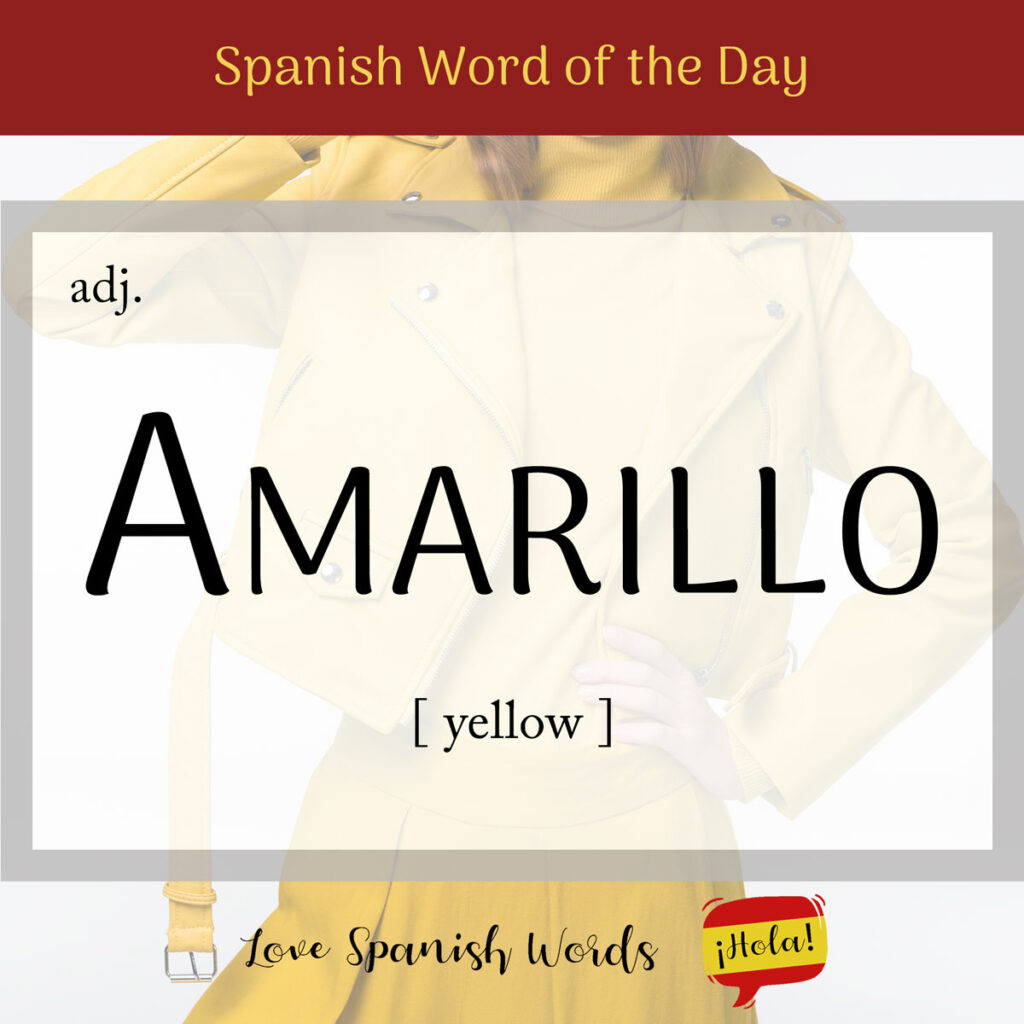Amarillo (yellow) comes from the Latin amarellus (amārus) which traces back to the meaning amargo or sour. It is thought this possibly came from the colour of the skin of an unwell person or possibly from the colour of bile which is sour.
Latin American Pronunciation
European Pronunciation

Amarillo, the third colour in the rainbow, is primarily used as an adjective which means it must agree in both gender and quantity with the object it is describing as illustrated below:
- amarillo
- amarilla
- amarillos
- amarillas
¿Has visto las hermosas flores amarillas en el jardín?
Have you seen the beautiful yellow flowers in the garden?

It can be said that your skin is yellow (amarilla) if you become pale or sallow due to being unwell.
La prensa amarilla (or amarillista) is an American term for journalism and associated newspapers that use sensationalism and scandal-mongering but present little or no legitimate, well-researched news. They may exaggerate news events using eye-catching headlines for increased sales. These types of publications are known as the tabloids in the UK.
Amarillo is a masculine noun when talking about the colour used in painting, for example, and it is also the colloquial name for fried sweet plantain in most of Latin America.
Me encanta acompañar los fríjoles con plátanos amarillos.
I love having some fried sweet plantain with my beans.

